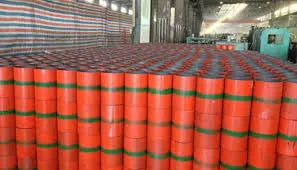- Afrikaans
- Albanian
- Amharic
- Arabic
- Armenian
- Azerbaijani
- Basque
- Belarusian
- Bengali
- Bosnian
- Bulgarian
- Catalan
- Cebuano
- Corsican
- Croatian
- Czech
- Danish
- Dutch
- English
- Esperanto
- Estonian
- Finnish
- French
- Frisian
- Galician
- Georgian
- German
- Greek
- Gujarati
- Haitian Creole
- hausa
- hawaiian
- Hebrew
- Hindi
- Miao
- Hungarian
- Icelandic
- igbo
- Indonesian
- irish
- Italian
- Japanese
- Javanese
- Kannada
- kazakh
- Khmer
- Rwandese
- Korean
- Kurdish
- Kyrgyz
- Lao
- Latin
- Latvian
- Lithuanian
- Luxembourgish
- Macedonian
- Malgashi
- Malay
- Malayalam
- Maltese
- Maori
- Marathi
- Mongolian
- Myanmar
- Nepali
- Norwegian
- Norwegian
- Occitan
- Pashto
- Persian
- Polish
- Portuguese
- Punjabi
- Romanian
- Russian
- Samoan
- Scottish Gaelic
- Serbian
- Sesotho
- Shona
- Sindhi
- Sinhala
- Slovak
- Slovenian
- Somali
- Spanish
- Sundanese
- Swahili
- Swedish
- Tagalog
- Tajik
- Tamil
- Tatar
- Telugu
- Thai
- Turkish
- Turkmen
- Ukrainian
- Urdu
- Uighur
- Uzbek
- Vietnamese
- Welsh
- Bantu
- Yiddish
- Yoruba
- Zulu
Understanding the Importance and Functionality of Petroleum Tubing Couplings in Oil Extraction Operations
Understanding Petroleum Tubing Couplings An Essential Component in Oil and Gas Production
In the oil and gas industry, the extraction of hydrocarbons from underground reservoirs is a complex process that requires a range of specialized equipment. Among these, petroleum tubing couplings play a crucial role in ensuring the efficiency and safety of operations. This article aims to shed light on what petroleum tubing couplings are, their significance, and the various considerations involved in their selection and use.
What are Petroleum Tubing Couplings?
Petroleum tubing couplings are mechanical fittings that connect sections of tubing used in the production of oil and gas. Tubing itself refers to the pipe through which hydrocarbons are transported from the wellbore to the surface. Couplings serve as connectors, linking different lengths of tubing to form a continuous line that can withstand high pressures and temperatures associated with subterranean environments.
Typically made from steel or other high-strength alloys, these couplings are designed to provide a robust seal against the harsh conditions found during drilling and production. They can be categorized into various types based on their design and application, including butt-welded, threaded, and integral couplings, each suited for specific contexts within the petroleum industry.
The Importance of Tubing Couplings
The functionality of petroleum tubing couplings is essential for several reasons. Firstly, they ensure the integrity of the tubing string; any weak point in the connection can lead to failures, which might result in leaks or even catastrophic blowouts. The durability and strength of couplings help to mitigate such risks, maintaining a secure and reliable channel for hydrocarbon transport.
Secondly, tubing couplings facilitate the maintenance and repair of tubular systems. When sections of tubing need replacement or adjustment, couplings make it straightforward to disconnect and reconnect different segments, allowing for efficient work in maintaining the overall system.
petroleum tubing coupling

Moreover, the design of couplings can also influence flow rates and pressure drops within the tubing system. Properly designed and manufactured couplings can minimize turbulence and resistance, contributing to a more efficient extraction process.
Factors Influencing the Choice of Couplings
When selecting petroleum tubing couplings, several factors come into play. Chief among these is the application environment—considerations like temperature, pressure, and the chemical nature of the fluids being transported are essential in determining which type of coupling to use. For instance, corrosive fluids may necessitate couplings made from resistant materials to ensure longevity and safety.
Additionally, the mechanical properties of the coupling are critical. Factors such as tensile strength, yield strength, and fatigue resistance must be evaluated based on the specific operational demands of the drilling or production process.
Another significant consideration is the installation requirements of the couplings. Some types may require specialized tools or techniques for installation or removal, which can influence operational efficiency and labor costs.
Conclusion
Petroleum tubing couplings are a fundamental yet often overlooked element in the oil and gas industry. Their role in connecting tubing sections safely and efficiently cannot be underestimated, as they directly influence the safety and productivity of the entire extraction process. By understanding the various types and functions of couplings, industry professionals can make informed choices that enhance operational efficiency and safety, thereby supporting the ever-demanding needs of global energy production. Investing in quality couplings and considering the specific needs of each operation will ultimately lead to safer and more successful oil and gas production endeavors.
-
Well Casing Extension Couplings – Applications and InstallationNewsJun.06,2025
-
Types of Crossover Subs in Drilling & CompletionNewsJun.06,2025
-
Key Features of High-Quality Tubing Pup JointsNewsJun.06,2025
-
Installation and Maintenance Tips for Steel Couplings for PipeNewsJun.06,2025
-
How to Select the Right Pup Joint for Oil & Gas OperationsNewsJun.06,2025
-
Applications of Stainless Steel Pipe CouplingsNewsJun.06,2025







